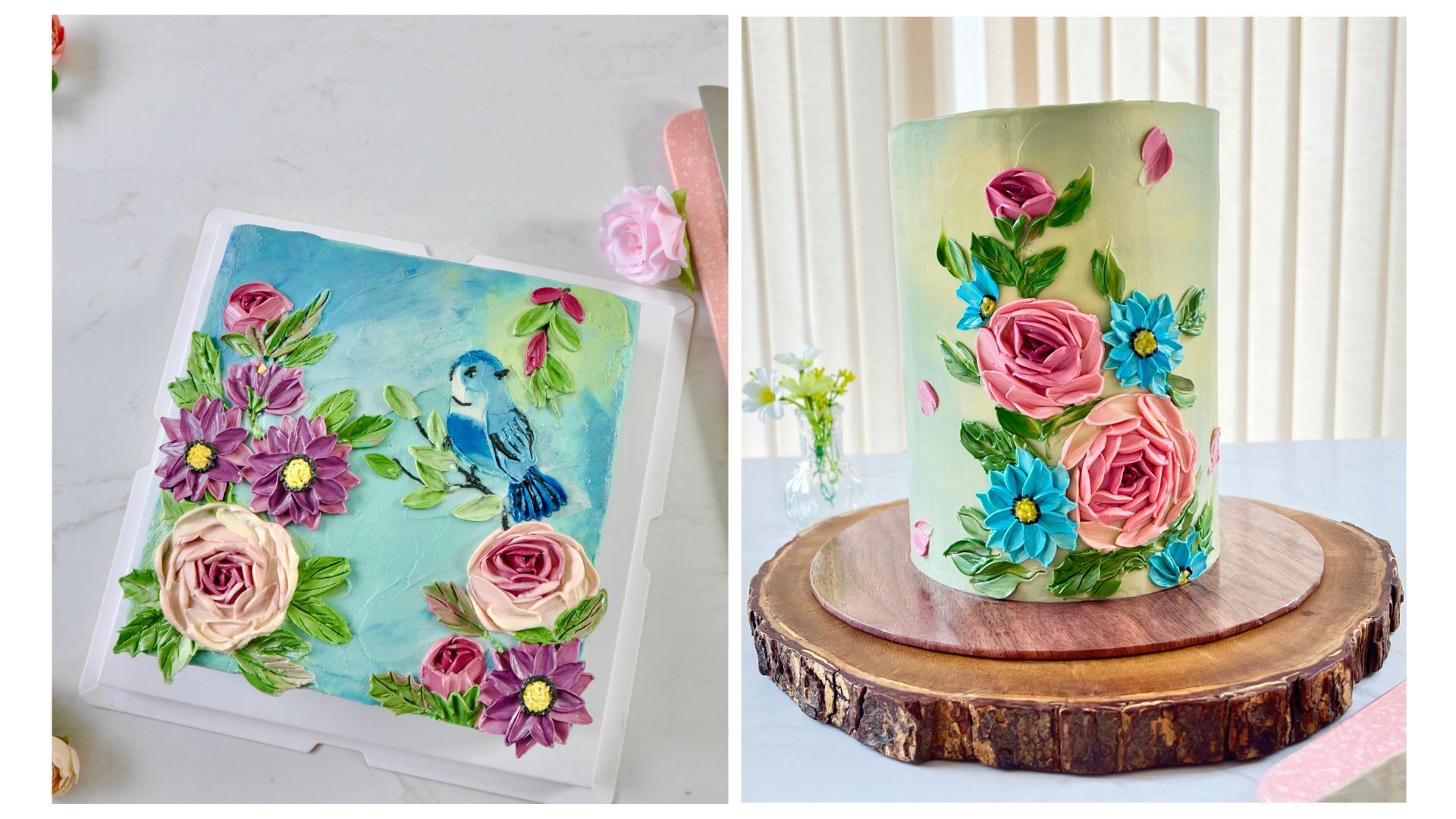5 Ways to Make Stable Buttercream - TOP Buttercream Tips

Unstable Buttercream can be a source of frustration, leading to compromised designs and a less-than-ideal finish on your cake creations. I get that and I fully understand the pain!
For many years I struggled myself with unstable buttercream and had issues like;
- Curdled buttercream
- Buttercream with a thousand air holes
- Buttercream that's overly sweet
- Buttercream that melts as I pipe flowers
Can you relate?
After many painful trail and errors I developed my Signature Buttercream Recipe (Before you ask, It is not American Buttercream, Not Swiss Meringue, Doesn't have Eggs, and is 100% Vegetarian). Our Signature Buttercream is now used in all my Cake decorations and is taught in the Online School.
But Regardless of the kind of Buttercream you use, These are my TOP 5 Ways to Stabilise Buttercream. Do try these Tips;
1. Prepping the Butter
Butter is the fundamental ingredient of making Buttercream and unfortunately Butter has a very low melting point. Did you know that Butter starts to soften in as little as 25-30 degree Celcius? So prepping Butter in the making stages of Buttercream is crucial. Try to use slightly cold Butter (not room temperature/or not freezing cold) in the whipping stages, as the cold butter enables to incorporate enough air in to the beaten mixture thereby Increasing the Stability of the Buttercream as well.

2. Using sieved Icing Sugar
Sieving Icing sugar plays a pivotal role in achieving the desired texture and taste of your Buttercream. This process effectively eliminates any lumps in the sugar, transforming it into fine, uniform particles that can seamlessly blend with the Butter. As a result, the sugar readily melts into the butter, leading to a smoother and more consistent mixture.
The benefits of sieving extend beyond texture; it significantly enhances the stability of your Buttercream. The end result is a luscious, non-grainy Buttercream that not only looks delightful but also tastes absolutely divine.

3. Avoid Under-beating or Over-beating
Achieving the perfect consistency for your Buttercream involves finding the right balance in the beating process. Under-beating the mixture will leave the butter with insufficient incorporated air, resulting in a softer Buttercream.
On the other hand, Over-beating can introduce numerous unwanted air holes, compromising the stability and look of your creation.
To strike the ideal balance, it's advisable to aim for a total whipping time of about 5-6 minutes during the Buttercream making process. This timeframe allows you to attain a luscious and stable Buttercream that's just right.
4. Stabilising Ingredients
When it comes to Stabilizing your Buttercream, there are several options to consider. While royal icing sugar with egg white powder can enhance stability, it's important to note that it may no longer be a suitable choice for a vegetarian audience.
To maintain a vegetarian-friendly Buttercream, you can explore alternatives such as replacing a portion of the butter with vegetable shortening. This modification can effectively increase the overall melting point of the butter in your Buttercream.
Another useful ingredient is incorporating cornflour or milk powder, typically about 1 tablespoon for every 500 grams of icing sugar. This addition aids in stabilizing the Buttercream by reducing the risk of it becoming too soft or runny.

5. Importance of Cake preparation
Indeed, a well-baked cake is just as essential as the Buttercream when it comes to achieving a stable and beautifully decorated cake. Evenly baked cakes provide a solid foundation for the Buttercream and decorations to adhere to.
To further enhance the stability of your decorated cake, my recommendation is to chill the Buttercream-covered cake in the fridge. It's crucial to place it in a Cake Box to prevent condensation. Advising customers to follow this same procedure once the cake has been delivered to them can help ensure the cake remains in optimal condition.
When it's time to enjoy the cake, suggest taking it out of the fridge about an hour or two before their event. This allows the cake to gradually come to room temperature, ensuring that it's at its best when served. By paying attention to these details, you can offer your customers a beautifully decorated and stable cake that's sure to be a hit at any occasion.

Got questions, email me at [email protected] :)
Neetha




